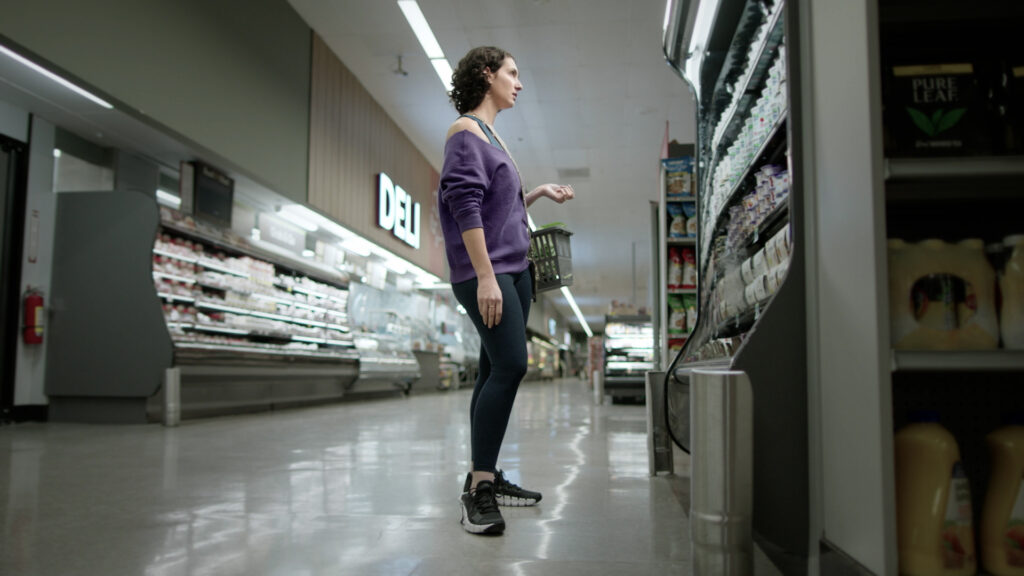
Beth Johnson Interviewed About How to (and Not to) Address Racism and COVID-19 as a Brand
By Carolyn M. Proctor – Data Editor, Washington Business Journal
Jul 31, 2020
Please see the full article in Washington Business Journal.
Brands have struggled to stay relevant and corporate leaders have grown uneasy staying on the sidelines, as the headlines of the day pull everyone’s attention in a multitude of directions. In the wake of the Covid-19 pandemic’s toll and the worldwide protests against police brutality and systemic racism sparked by the killing of George Floyd in Minneapolis, we’ve all had a lot to process. And one thing is crystal clear: There are right and wrong ways to address these issues, whether it’s in an advertisement or a press release. You can almost picture the meetings that led to the ads and public statements issued of late. Sometimes those messages hit the mark. Too many times they miss, wildly on occasion. Communication is an art form. We asked local experts what strategies they should and should not be using in their public messaging right now, including their ads. And oh, they had some thoughts to share.
WHAT NOT TO DO
LIP SERVICE
If your message rings hollow, it’s going to show — and it’s not a good look. “You can’t ‘try’ to be genuine. You either are or you’re not. Don’t try to be something that you’re not because people will see right through it,” said Sacha Cohen, founder of Grassfed Media. Jason Meyer, director of corporate communications for APCO Worldwide, called out big tech specifically for rushing to issue public statements for equality, even though the industry notoriously lacks diversity. “Statements like ‘We stand with the Black community’ fall really flat when your ranks really welcome and retain few Black colleagues who can grow careers,” he said.
CLICHÉS & PLATITUDES
Avoid predictable platitudes even if you mean them. Yamanair Creative CEO Yaman Coskun said “just about every local and national campaign” used pandemic rhetoric such as:
‘uncertain, unprecedented, challenging times’
‘we are all in this together’
‘we’ll get through this’
‘the new normal’
‘we understand’
‘now, more than ever’
They accompanied “a sappy piano tune featuring a deep, poignant delivery reflecting a somber tone.” Those are major turnoffs for consumers, he said, citing ad research. In short, don’t be pretentious.
STAY SILENT
Maybe you think saying nothing is the safest bet, but it too can speak volumes. And that silence can be particularly loud in the federal contracting universe, said Joyce Bosc, president and CEO of Boscobel Marketing Communications. “In the business-to-government (B2G) world, it’s a company’s mission to serve the U.S. government and its citizens. All of them. If companies don’t communicate in times of crisis or social change, the people in their community make up their own version of that company’s stance,” she said.
TEACHABLE MOMENTS CALLED OUT
PEPSI
This dates back to 2017, during a public protest led by Black Lives Matter after the police killing of 18-year-old Michael Brown in Ferguson, Missouri. The now-infamous ad, which has its own Wikipedia entry, was called “Live for Now,” and featured reality TV star Kendall Jenner being photographed modeling a silver dress, before noticing a protest march passing by. She then dramatically pulls off her blonde wig and hands it to a Black assistant before appearing at the front of the march in a more casual outfit, and hands the police a Pepsi. An officer drinks it and the crowd cheers, some embracing each other with joy. Pepsi later pulled the ad, releasing the following apology:
“Pepsi was trying to project a global message of unity, peace and understanding. Clearly we missed the mark, and we apologize. We did not intend to make light of any serious issue. We are removing the content and halting any further rollout. We also apologize for putting Kendall Jenner in this position.”
NATIONAL FOOTBALL LEAGUE
When the NFL put out a statement condemning racism and claiming to be “committed” to addressing it, many were quick to recall how the organization treated former San Francisco 49ers quarterback Colin Kaepernick. He had peacefully protested on behalf of this very cause, especially against police brutality, by kneeling during the national anthem before games. He was let go from the team in 2017 as a direct result, and remains a free agent as of press time. Though she called this out as an example of missing the mark, Beth Johnson, founder and CEO of RP3 Agency, also said, “These statements resulted in backlash from fans and followers, but have led to commitments of specific change.” Krystal Glass, messaging and public relations director for Black Creative Group, also cited the positive move to change the Washington team’s name as “a great example of righting a wrong as it relates to messaging and advertising.”
WHAT TO DO
DIVERSIFY WITHIN
For the love of all that is holy, have a diverse team craft your message. If you want to say something meaningful to a wider audience than just yourself and people with your own background, you need people with different perspectives to weigh in, and they need to feel comfortable being completely candid. “We all have blind spots — beyond issuing statements, we need a less homogeneous pool of leaders at the executive level and on boards and more inclusive hiring practices to ensure companies can compete, connect and meet the moment,” said Kerry-Ann Hamilton, CEO of KAH Consulting Group.
LISTEN AND SHARE
Company leaders should educate themselves first, said APCO’s Meyer, and then share what they learn. “First, listening to one’s employees about the realities of the culture—you’re likely to find positive and not so great attributes to address. Next, listen to experts, people who are doing the hard work to diagnose and combat systemic inequality. Finally, share what you’re learning. Figure out how your organization can best add to the growing knowledge base on these matters, which makes you part of the solution,” he said.
TAKE REAL ACTION
If you want people to know how you really feel, you have to show them. Derede McAlpin, senior vice president at Levick and chair of its litigation and diversity, equity & inclusion practice groups, put it this way: “Do or don’t. Inaction is the worst thing a company or organization can do during this historical moment in U.S. history.” Companies should “view this movement as an opportunity to take and most importantly, demonstrate action. The honorable John Lewis said it best, ‘When you see something that is not right, not just, not fair, you have a moral obligation to say something. To do something.’”
TEACHABLE MOMENTS APPRECIATED
BEN & JERRY'S
When ice cream company Ben & Jerry’s issued a statement titled, “We must dismantle white supremacy — Silence is NOT an option,” in support of Black Lives Matter, it didn’t come out of left field. Customers expected no less from the company that has spoken out on social justice issues for many years. The company also did more than voice support for BLM and the victims of police brutality, calling on the federal government to take four specific actions to spur change for the better.
MICROSOFT
The tech giant announced its “United for Change” initiative this year in response to BLM, making a statement of support but also issuing donations of $250,000 each to the Black Lives Matter Foundation, Equal Justice Initiative, Innocence Project, The Leadership Conference, Minnesota Freedom Fund and NAACP Legal Defense & Education Fund. The company also pledged to match employee donations to these and other civil rights, social action and advocacy groups. And it promised to address its own internal imbalances by investing in a more diverse talent pipeline. Alisa Valudes Whyte, senior partner and CEO of Merritt Group, said, “It is clear that Microsoft does not view these actions as simply checking a ‘CSR box,’ but rather an opportunity to step up and spark change for the long term.”
NETFLIX
More than one person we spoke to hailed Netflix’s actions. This June, CEO Reed Hastings donated $120 million toward scholarships at Historically Black Colleges and Universities. The company itself also donated $5 million to organizations helping Black youth, Black creators and Black business owners. The streaming service company also launched a Black Lives Matter collection of films and shows that reflect the Black American experience.
WHITMAN-WALKER HEALTH
The local nonprofit was also mentioned for its public response to the protests. “Building on their brand promise and tagline — We See You — they named racism as a public health crisis and underscored their commitment to stand against discrimination, bias and stigma. They also promised to listen, learn and lean into the work that is necessary to dismantle systems of oppression, from discrimination in health care to police violence,” said Hamilton from KAH.
News
Let's make some good.
Drop us a line


